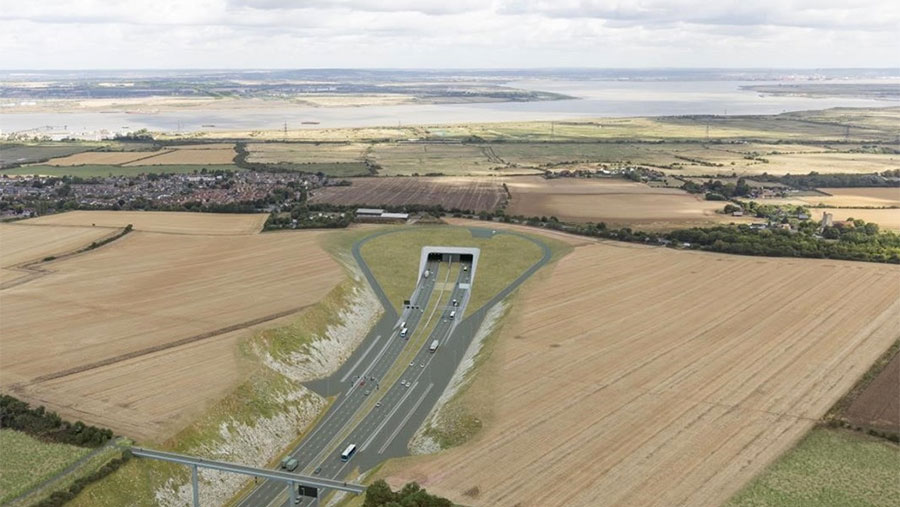Thames crossing plans lacking detail, say frustrated farmers
 © Highways England
© Highways England Farmers affected by plans for the Lower Thames Crossing are frustrated that detail around some key issues is still lacking, despite it being five years since Highways England’s first consultation on the proposals.
The Lower Thames Crossing is a proposed new road connecting Kent and Essex through a tunnel beneath the River Thames, designed to relieve pressure on the existing Dartford Crossing.
Highways England has just announced a further round of consultation on the plans, which will close on 8 September.
See also: 2,500 acres lost to Lower Thames Crossing
It says this is an opportunity for local people to have their final say before it submits a second application for a Development Consent Order (DCO) later this year.
It previously submitted an application for a DCO in October 2020, but subsequently withdrew this following initial feedback from the Planning Inspectorate.
If the revised DCO is granted, Highways England intends to start construction of the new road in 2024, with a target opening date of 2029-2030.
Tom French, director with BTF Partnership, which is representing many of the 20 farmers and landowners affected both north and south of the Thames, acknowledged that the Highways England team had generally been engaging with farmers quite well, but there was still frustration over some key aspects.
For example, there were no set calculations to define how much land was required for ecological mitigation, which made negotiations over whether alternative areas could be considered or parcels amended difficult.
“There is some frustration about the extent to which environmental and woodland mitigation requirements may unnecessarily be taking up good farmland with no real justification,” he said.
“There is no set ratio in terms of if they take an acre of ancient woodland out, do they replace it with two acres or seven acres. It is all subjective.”
Intrusive surveys
Mr French said there had also been a big push to complete significant amounts of survey work last summer, prior to the first DCO application being made.
Farmers had hoped this intrusive work was over, but they were once again being inundated with survey requests.
Much of this work involved the digging of Archaeological Trial Trenches (ATTs) which in some instances was so extensive it was affecting whole field parcels.
One Essex landowner had so far had about 700 trenches dug on their land – each a minimum of 30m by 2m. Some of these were deep enough that the land drains in the field had been destroyed.
Mr French said the feeling overall was that the clock was ticking when it came to Highways England addressing some signifcant matters facing individual landowners.
This includes negotiating terms where early acquisition of land is required, and agreeing draft statements of common ground.
Statements of common ground are needed to set out the legal arrangements where landowners want to retain the freehold of a parcel of land that will be planted for mitigation purposes, but will be covered by a covenant.
Another area where farmers are pushing back is Highways England’s plans to grant additional access rights to the public.
“That raises all those issues that comes with allowing access through farms, such as vandalism, criminal damage, fly-tipping and trespass,” said Mr French.
